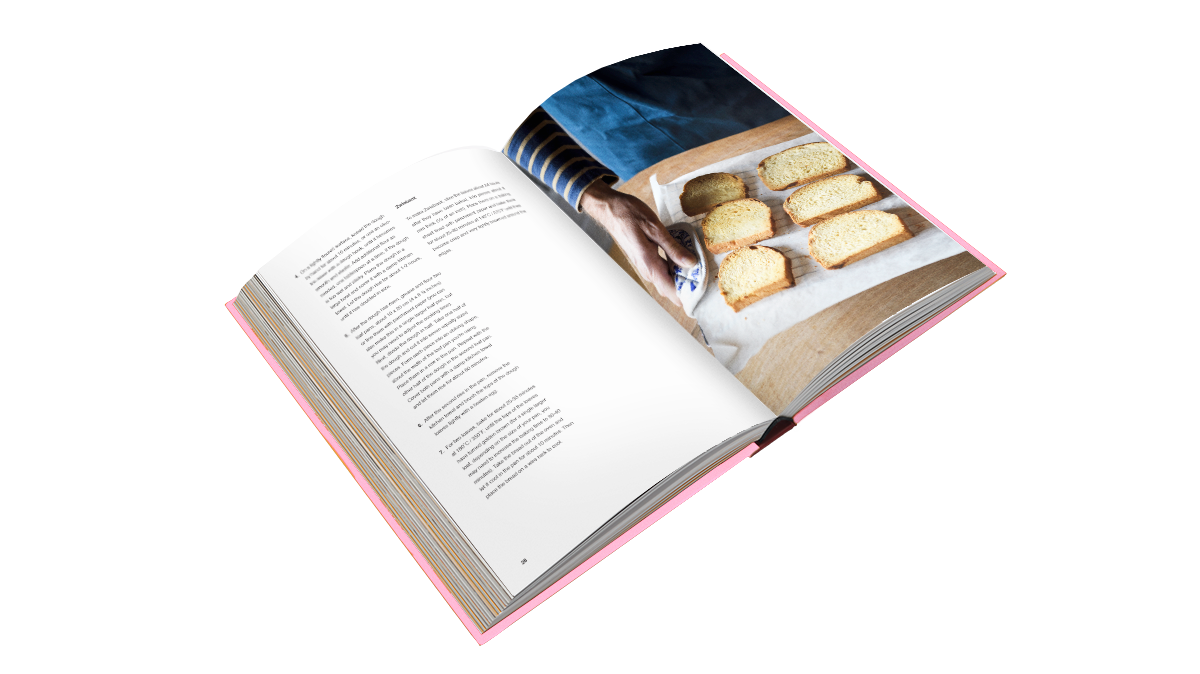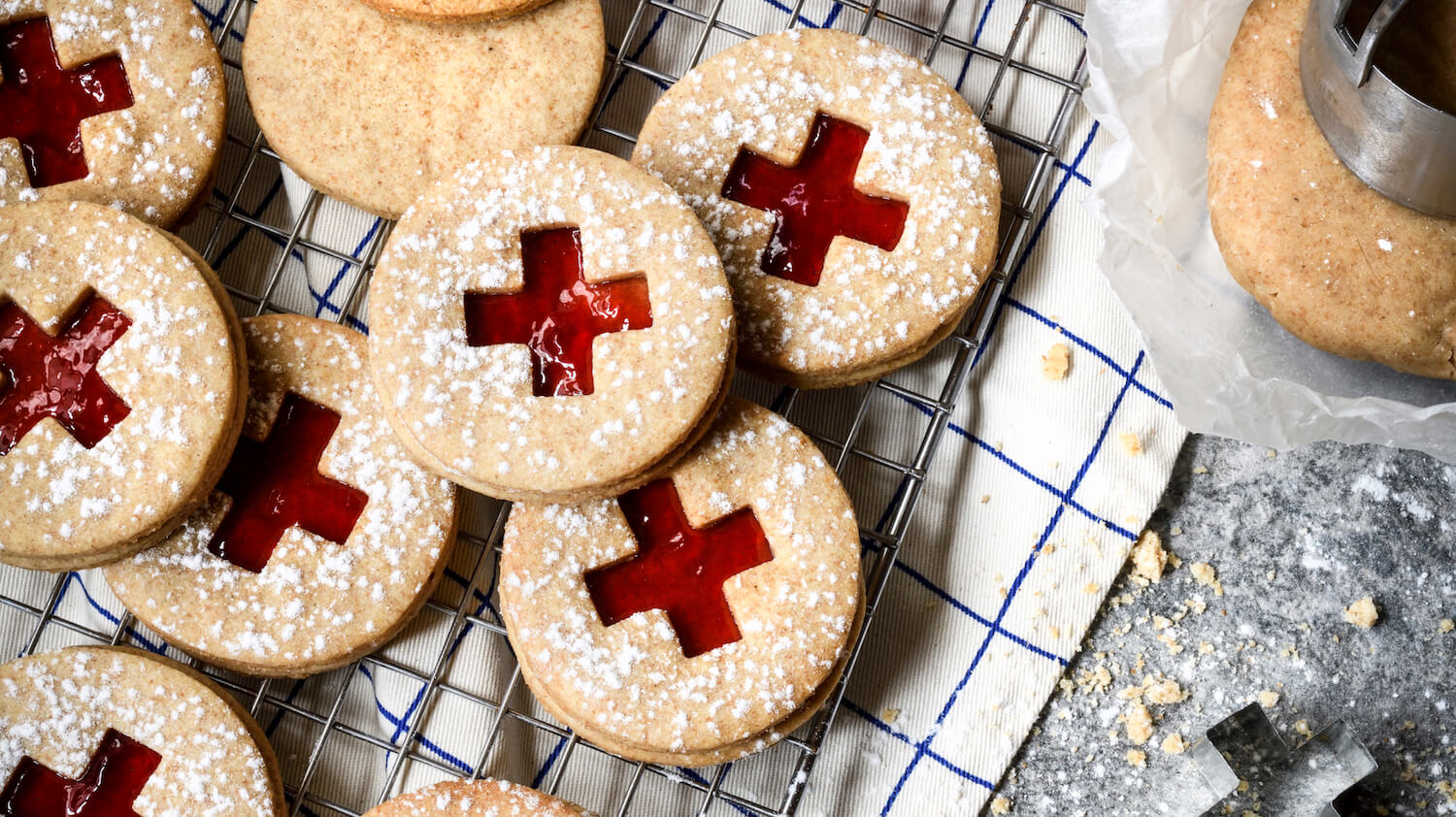
Heddi Nieuwsma moved to Switzerland from the United States in 2012. Since her arrival, she has developed a passion for Swiss cuisine, which she wants to introduce to other countries with something other than chocolate and cheese. Via her blog «Cuisine Helvetica», she shares recipes, stories and travel experiences. After «Swiss bread» she invites us to discover Switzerland through 45 desserts.
How do you usually pick or collect recipes for a book?
First and foremost, I want to pick recipes for foods that I love to eat myself. Then, because I always try to show the diversity of Switzerland, I strive to create a collection of recipes that represent this small country’s different linguistic regions. I also want a variety of recipes in terms of cooking methods and level of difficulty —although my goal is to develop recipes that will work for everyone.
How do you plan your cookbooks?
It takes me many months to finalize my recipe list for a book because I always want to add more – more recipes, more stories, more detailed instructions to the recipes. In terms of research, I started studying Swiss food as soon as I moved here in 2012. I immediately became fascinated by all the new foods available to me. In the center of Neuchâtel, I discovered the neighborhood fromagerie, fishmonger, the farmers’ market, bakeries and more. I learned through practice – shopping and asking questions, searching for Swiss recipes, and cooking at home. My research includes multiple methods. One resource that has been invaluable is the online directory of traditional food products via Patrimoine Culinaire Suisse (Culinary Heritage of Switzerland). I also search through old cookbooks found at libraries and secondhand stores or shared with me by friends. When I travel to attend culinary events or visit bakeries and restaurants, I use these opportunities to deepen my knowledge of regional cuisine. For my Sweet & Swiss book, my goal again is to share a collection of recipes that help people better understand Switzerland’s diverse culinary landscape. Plus, I have a huge sweet tooth! These are simply the recipes that I like to make at home. In addition, I have included five dessert recipes from five chefs working in Switzerland that I greatly admire. I’m so excited to share them with you!

What is your motivation to travel in Switzerland for food? Do you usually take your family with you or do you go alone?
Any time I travel in Switzerland, whether for a food-related assignment or on vacation with my family, I’m in research mode. My family jokes that I can’t really go on holiday unless I leave the country! I take so much pleasure in meeting people around the country to talk about food, and of course, to taste it too! I love traveling by myself and having the freedom to stop wherever and as long I want to at a farm shop or restaurant, for example. At the same time, sharing these experiences with my family can be wonderful, and they help provide a different perspective. In the summer of 2021, I took my boys on a whirlwind “culinary tour” to three of the restaurants in my Sweet & Swiss book. Within one week’s time, we were in the rural countryside, the mountains and two major cities. By the time we got to the last restaurant, I must admit they were ready to get back home!
Would you say coming from the US has given you a special way of looking at Swiss food? Do you see similarities in some recipes? What are the difficulties?
Everyone tells me this – that coming from the US, I offer an objective perspective on Swiss food. Honestly, I never really thought about this until people started mentioning it to me. I just wanted to eat! When I arrived in Switzerland, I immediately became fascinated with Swiss ingredients and traditional dishes. Ten years later, and I still have the same passion to learn more.The primary difficulty for me is that I don’t speakGerman. I can recognize a number of food words,like mehl (flour) and zwiebel (onion), from reviewing recipes in German, but that’s not enough. Since I live in Western Switzerland, my focus has been on learning French. With Sweet & Swiss nearly finished, now is the time for me to finally start learning some German.
Do you think the different regions of Switzerland have different approaches or relationships to desserts?
Few dishes in Switzerland span the entire country. I think the closest things that come to a “national dish” would be fondue, raclette, Cervelat sausages or a Zopf, a braided loaf of bread for Sundays. The story of Swiss food is really a regional one, with influences from France, Germany and Italy. In terms of sweet recipes, three types of Christmas cookies exist nearly throughout the country, although with different names depending on the linguistic region: Mailänderli (little lemon shortbread cookies), Basler Brunsli (nutty chocolate biscuits) and Zimtsterne (cinnamon stars). Whenever my family and I cross the Röstigraben, from our home in French-speaking Switzerland to the German-speaking side of the country, we start noticing more Schnitzel and bratwurst on the menu. You can find Schnitzel in Suisse Romande as well, known as tranche panée, but its less common, in my opinion. Speaking of sausage, in the French-speaking cantons, you will find raw-cured sausages, such as Saucisson neuchâtelois, Saucisson vaudois and Boutefas. When you visit your local butcher in these regions, these sausages will be hanging behind the counter, unrefrigerated, and they need to be cooked before you eat them. I have not yet seen this culinary tradition on the Swiss-German side of the country, where veal sausages are certainly more prevalent. When it comes to desserts, no matter where you are, I think dairy & eggs, nuts, fruit (fresh and dried) and spices feature heavily into Swiss desserts. Of course, chocolate also serves as a popular base for dessert, whether a velvety mousse or a slice of cake. In terms of regional variations, you will find sweet dishes in the Italian-speaking canton of Ticino with local ingredients like chestnuts and farina bóna, a toasted corn flour. Only in French-speaking Switzerland will you see two kinds of tarts made with a thick syrup made from pears, apples and/or quince: Tarte à la raisinée in Vaud and Tarte au vin cuit in Fribourg. German-speaking Switzerland has more gugelhopf (fluted cakes with holes in the center) and some other special cakesfound only in the certain cities, such as the Baarer Räbentorte in Baar (Zug) with almonds and the Solothurner Torte in Solothurn (Solothurn) with hazelnuts.
How do you work on a cookbook project like this one? You are also a blogger. How is writing a book different from writing a blog entry?
Writing has always felt like the most effective way to express myself. It’s something I have enjoyed since I was a child. Like most people, I had always wanted to write a book, although I had imagined it would have been novel, not a cookbook! I like taking the time to fine-tune a sentence. Writing in the morning works best for me. Or, when I can have large blocks of uninterrupted time, so I can focus entirely on writing without distractions. Sometimes I need to escape to a local café so I can better concentrate on my work. The most exciting part of writing a book is finally holding it in your hand after it’s printed. Actually, the best part is hearing from readers that a recipe worked for them. That is truly the most rewarding part of writing a cookbook. In terms of writing for my blog or for a book, I put more pressure on myself to perfect a recipe that will be printed on a physical page! I think of recipes as almost a living thing – constantly changing and evolving. I always like adapting recipes – testing them with new ingredients or techniques. With a blog, I can easily go in and add these updates, which is obviously not possible with a book. As a result, I insist that recipes for my books are independently reviewed and tested, to help get another perspective on their clarity and effectiveness. My mom and sister are my constant editors. A close friend from childhood who I think is an incredible writer gives really good feedback. I also share my work with various subject matter experts to make sure I don’t have any fatal flaws in my research. Honestly, one of my favorites is a Betty Crocker (the American equivalent of Betty Bossi) cookbook that my mom gave me over 20 years ago. It’s the recipe I use for pancakes, fluffy biscuits and other basic American recipes. It’s falling apart! I need to tape it back together.
If you could only ever eat one Swiss sweet for the rest of your life, which one would you pick?
Fideriser Torte!


Validate your login
Login your account
Create New Account